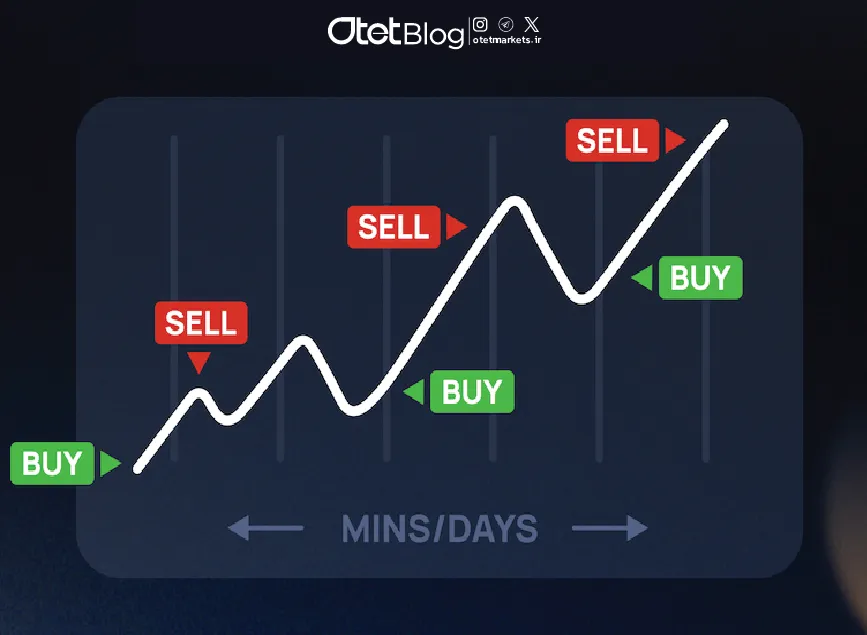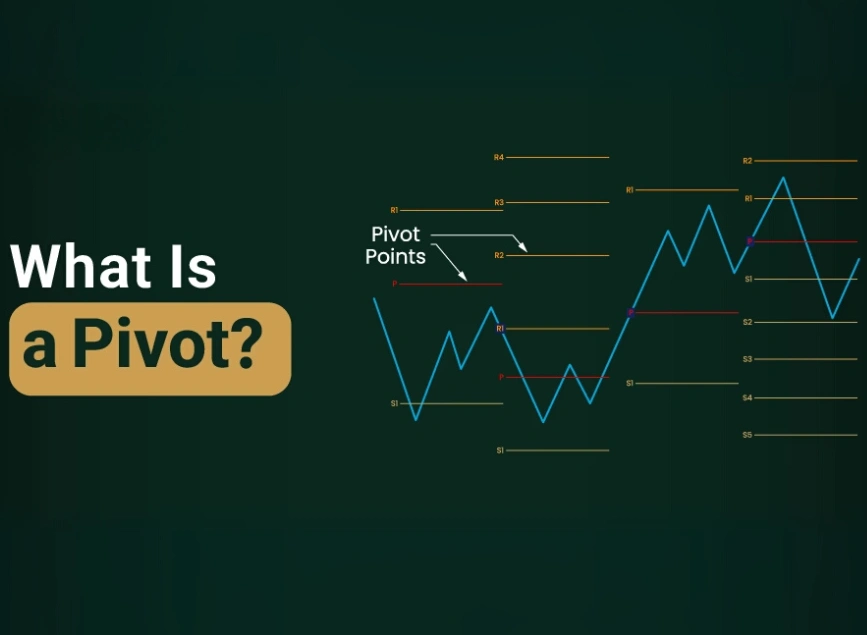
Scalping in Financial Markets: A Complete Guide to Fast Trading
Estimated reading time: 7 minutes
Table of contents
Scalping is a popular and high-intensity trading method used in financial markets. The goal? To capture small profits from quick, short-term trades. If done right, scalping can yield substantial returns, but it also requires skill, focus, and the right tools. In this guide, we’ll break down the ins and outs of scalping, helping you understand the strategy, key considerations, and how to succeed.
What is Scalping?
Scalping is a fast-paced trading strategy that involves making many small trades over a very short period—sometimes just a few minutes or even seconds. Scalpers aim to capitalize on small price movements by entering and exiting trades quickly. Their goal is to accumulate these small profits and turn them into a significant overall return. Unlike long-term traders who may focus on fundamental analysis, scalpers rely on technical analysis and short-term price trends to make their decisions.
Characteristics of a Successful Scalper
To thrive as a scalper, you need to develop specific traits and habits that align with the demands of this trading style. Let’s take a closer look at some of the key characteristics that define successful scalpers.
Speed of Action
Scalping requires quick decision-making for both entering and exiting trades. If you hesitate, the opportunity may slip away. The faster you act, the more you’ll profit from small market moves.
Short Timeframes
Scalpers typically use extremely short time frames—such as 1, 5, or 15 minutes—to pinpoint entry and exit points.
High Focus
Because scalping involves rapid decisions and frequent trades, staying alert and focused is crucial. Every second counts.
Emotional Control
Scalping can be a psychological challenge, especially when faced with rapid price movements. Being able to stay calm and avoid impulsive decisions is essential to maintaining profitability.
Adaptability
Markets are dynamic, so scalpers need to be flexible. Adapt to shifting market conditions and adjust strategies as needed.
Technology Savvy
With such short timeframes, having access to high-speed internet and reliable trading systems is essential to prevent delays or missed opportunities.
Read More: Risk Management in Trading: A Comprehensive Guide
The Psychology Behind Scalping Success
In scalping, trading psychology is just as important—if not more so—than technical knowledge. The constant pressure to make quick decisions and monitor the market can be stressful. Here are the psychological factors that can make or break your scalping success:
Stress Management
With the number of trades involved, scalping can be stressful. Successful traders develop strategies to handle stress, which allows them to focus on the task at hand and avoid burnout.
Discipline
Lack of a clear strategy can lead to emotional trading decisions. Sticking to a plan helps ensure you don’t get caught up in market noise and make impulsive moves.
Avoiding Greed
It’s tempting to hold onto trades longer in hopes of bigger profits. However, in scalping, it’s crucial to stick to your profit goals and exit trades at the right time to secure your gains.
Controlling Loss Aversion
Fear of loss can cause traders to avoid good opportunities or prematurely exit positions. Overcoming this fear is necessary to take calculated risks and stay on track.
Maintaining Focus
Given the fast nature of scalping, staying focused and making rapid decisions is essential. Losing concentration for even a moment can lead to missed opportunities.
Spread and Commission: Key Factors in Scalping
The profitability of scalping largely depends on the spread (the difference between the buy and sell price) and the broker’s commission. Since scalpers execute many trades, even small spreads or high commissions can eat into their profits. Here’s what to keep in mind:
Low Spread and Reasonable Commissions
Choosing a broker with a low spread and minimal commission can make a significant difference to your bottom line. Every cent counts when you’re making multiple trades.
Broker Efficiency
It’s also important to choose a broker that offers fast order execution. A broker with slow execution times may not be suitable for scalping.
Best TimeFrames for Scalping
When it comes to timeframes, scalpers prefer to work within very short windows. Let’s dive into the timeframes that are most commonly used by scalpers:
1-Minute Timeframe
This is best for advanced traders who can react quickly to small price movements and capitalize on brief fluctuations.
5-Minute Timeframe
The most popular choice for scalpers, this timeframe offers a balance of speed and precision, making it a favorite for many traders.
15-Minute Timeframe
For those who want slightly more time to analyze price trends without losing the benefits of quick trading, the 15-minute chart can provide a more balanced approach.
The Best Trading Pairs for Scalping
When choosing what to trade, scalpers look for pairs with high liquidity and volatility. These pairs provide the opportunities needed to generate consistent profits. Here are some great options:
Major Currency Pairs
- EUR/USD, GBP/USD, USD/JPY: These pairs tend to have tight spreads and high liquidity, making them ideal for scalping.
Global Indices
- S&P 500, DAX 30: Known for regular price fluctuations and excellent scalping opportunities.
Cryptocurrencies
- Bitcoin and Ethereum: These cryptocurrencies are highly volatile, providing abundant opportunities for quick trades.
High-Liquidity Stocks
- Tech stocks: Stocks from well-known tech companies often have significant daily price movements, making them a good choice for scalping.
Read More: What is the Relative Strength Index (RSI)?
The Best Times for Scalping
Timing your trades is just as important as choosing the right pairs. The most optimal times for scalping occur when the market is most liquid and volatile. Here’s when to focus your efforts:
London and New York Session Overlap
The overlap of the London and New York trading sessions is the most active period, providing ample opportunities for profit.
Early New York Session
This time is especially volatile due to important economic news releases that drive market movements.
Asian Session
The Asian session is particularly favorable for trading regional currencies with high volatility, though liquidity tends to be lower than during other sessions.
Popular Scalping Strategies
Scalpers use various strategies to exploit market movements. Here are some of the most effective methods:
Technical Indicators
- Moving Averages, RSI, Bollinger Bands, MACD: These tools help identify trends and potential reversal points for quick trades.
Trading Volatile Ranges
Scalpers look for periods of increased volume or sudden price changes to take advantage of quick price movements.
Volume Analysis
Analyzing market volume can help scalpers pinpoint entry and exit points based on market activity.
Candlestick Patterns
Scalpers often use candlestick patterns to identify trend reversals or continuation signals.
Breakout Strategies
When price breaks through support or resistance levels, it can trigger significant price movements that scalpers can profit from.
Read More: Seven Essential ETF Trading Strategies for Beginners
Advantages and Disadvantages of Scalping
Like any trading strategy, scalping has its pros and cons. Here’s a quick breakdown:
Advantages
- Fast Profits: You don’t need to hold positions for long to earn a profit.
- Low Risk Per Trade: With short timeframes, the impact of large price fluctuations is reduced.
- No Need for Fundamental Analysis: Scalping is based on technical analysis, so you don’t need to study company reports or news in detail.
Disadvantages
- High Concentration Required: Scalping demands intense focus and quick decision-making.
- Increased Fees: Frequent trading can lead to high commissions and spreads.
- Stressful: Constant market monitoring can cause mental fatigue and stress.
- Broker Limitations: Some brokers may have slow execution speeds, making them unsuitable for scalping.
Tools for Successful Scalping
To be successful in scalping, the right tools are essential. Here’s what you’ll need:
Fast Trading Platform
A platform that executes trades instantly is crucial to ensure you don’t miss any opportunities.
Broker with Low Spreads
Lower trading costs can significantly improve your profitability.
Real-Time Market Data
Having accurate, real-time data helps you make quick and informed decisions.
Automated Trading Systems
Using automated systems can reduce human error and improve trade execution speed.
Key Tips for Scalping Success
Success in scalping comes down to discipline and strategy. Here are some essential tips to help you get ahead:
- Capital Management: Always determine your position size and manage risk effectively.
- Clear Strategy: Stick to a structured plan and avoid impulsive trades.
- Emotion Control: Stay calm and don’t let emotions drive your decisions.
- Practice: Use demo accounts to sharpen your skills before diving into live trading.
Conclusion
Scalping is a highly profitable yet challenging strategy in financial markets. It requires the right skills, tools, and psychological mindset to succeed. By focusing on fast execution, managing risk, and adhering to a solid strategy, traders can generate consistent profits. Remember, the key to scalping success lies in speed, precision, and discipline. If you’re ready to embrace the fast-paced world of scalping, make sure you’re equipped with the right knowledge and tools to thrive.
Share
Hot topics

What Is a Forex Robot and How Does It Work?
If you hang out with traders, in person, online, on Telegram or YouTube, you’ve probably seen someone talking about “Forex bots” or trading robots that can do some of the...
Read more




Submit comment
Your email address will not be published. Required fields are marked *